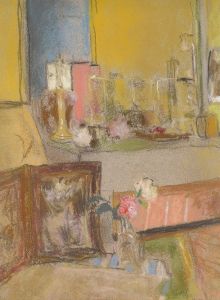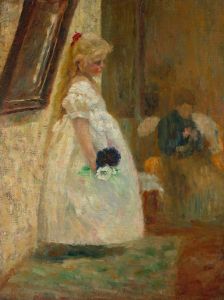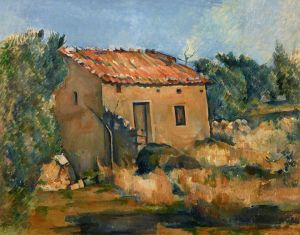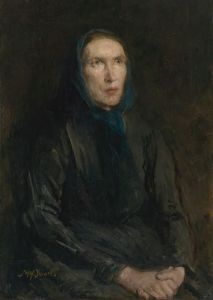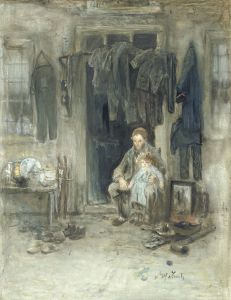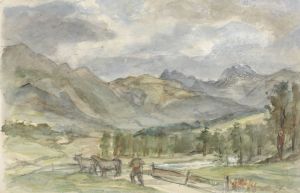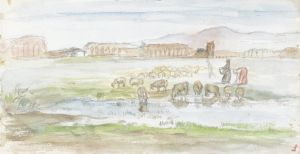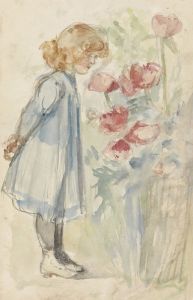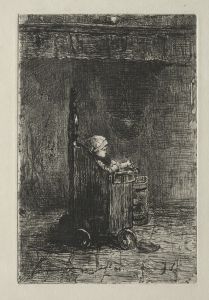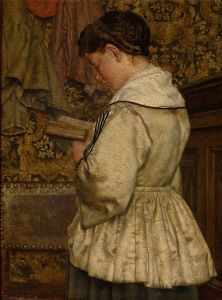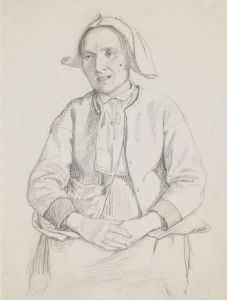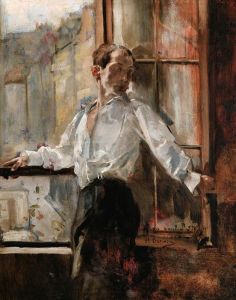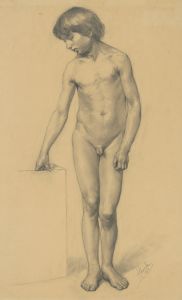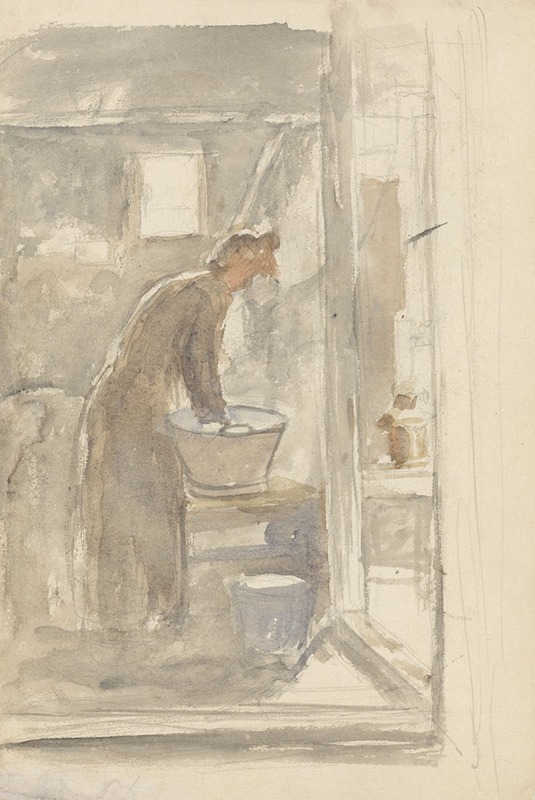
Interieur met vrouw aan de wastobbe
A hand-painted replica of Jozef Israëls’s masterpiece Interieur met vrouw aan de wastobbe, meticulously crafted by professional artists to capture the true essence of the original. Each piece is created with museum-quality canvas and rare mineral pigments, carefully painted by experienced artists with delicate brushstrokes and rich, layered colors to perfectly recreate the texture of the original artwork. Unlike machine-printed reproductions, this hand-painted version brings the painting to life, infused with the artist’s emotions and skill in every stroke. Whether for personal collection or home decoration, it instantly elevates the artistic atmosphere of any space.
Jozef Israëls, a prominent Dutch painter of the 19th century, is renowned for his poignant and realistic depictions of everyday life, particularly those of the working class. One of his notable works is "Interieur met vrouw aan de wastobbe," which translates to "Interior with Woman at the Wash Tub." This painting exemplifies Israëls' ability to capture the dignity and quiet strength of ordinary people engaged in their daily tasks.
Israëls was born in Groningen, Netherlands, in 1824 and became one of the leading figures of the Hague School, a group of artists known for their realistic portrayals of rural and urban life. His early training included studies at the Minerva Academy in Groningen and later at the Royal Academy of Fine Arts in Amsterdam. He also spent time in Paris, where he was influenced by the Barbizon School, known for its naturalistic approach to landscape painting.
"Interieur met vrouw aan de wastobbe" is a testament to Israëls' mature style, characterized by a somber palette and a focus on the emotional depth of his subjects. The painting depicts a woman engaged in the humble task of washing clothes, a scene that reflects the domestic life of the time. Israëls' use of light and shadow adds a dramatic quality to the scene, highlighting the woman's concentration and the physical effort involved in her work.
The setting is an interior space, likely a modest home, which is typical of Israëls' focus on the intimate and personal aspects of his subjects' lives. The details in the painting, such as the simple furnishings and the woman's plain clothing, emphasize the theme of simplicity and the honest labor of the working class. Israëls often chose such themes to evoke empathy and respect for the resilience and perseverance of ordinary people.
Israëls' work is often compared to that of Jean-François Millet, a French painter known for his depictions of peasant life. Like Millet, Israëls was interested in the universal themes of human struggle and endurance. His paintings often carry a sense of melancholy, yet they also convey a deep sense of humanity and compassion.
Throughout his career, Jozef Israëls received numerous accolades and was highly regarded by his contemporaries. His works were exhibited widely, and he became an influential figure in the art world, inspiring future generations of artists. "Interieur met vrouw aan de wastobbe" is a fine example of his ability to transform a simple, everyday scene into a powerful narrative about human life and labor.
Israëls passed away in 1911, leaving behind a legacy of works that continue to be celebrated for their emotional depth and technical skill. His paintings are housed in major museums and collections around the world, where they continue to be appreciated for their historical significance and artistic merit. "Interieur met vrouw aan de wastobbe" remains a significant piece within his oeuvre, capturing the essence of his artistic vision and the social realities of his time.





